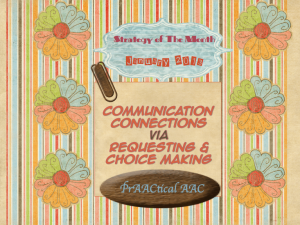“But he doesn’t like anything!” 5 Tools for Identifying Motivators and Reinforcement

One of the best ways to enhance our teaching is to understand and respect the things that motivate our learners. We are all motivated by different things, though, and sometimes it can be hard to figure out the specifics of what a particular learner likes well enough for it to be used as reinforcement. Sometimes it’s easy. We all know kids who would do anything for [iPad time; Thomas the Tank Engine, Super Why, Pokemon, Hello Kitty] or [you fill in the blank]. We can use those in formal and informal ways to keep these learners motivated and engaged. And that’s important because, often, what we are asking them to do is hard. But sometimes, we work with people for whom those ‘magic motivators’ aren’t so clear. The ‘typical’ reinforcers don’t seem to work for those folks, and that can slow down progress. How can we figure out what motivates... [Read More...]
Filed under: Featured Posts, PrAACtical Thinking
Tagged With: forms, preferences, reinforcement, teaching
